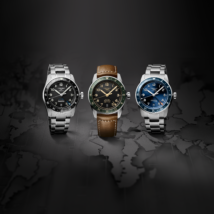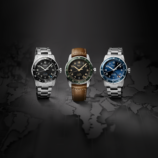Well set
Claw setting
The claw setting is suitable for achieving the best possible brilliance – as can be seen in Wagner Solitaire No 6. The claws, metal parts worked out of the gallery of the ring, ensure the solitaire is held securely. This enables diamonds in particular to fully develop their brilliance and radiance. Claw settings should be checked regularly to prevent a loose stone from being lost.
Bezel setting
The bezel setting is also suitable for jewellery featuring a solitaire – as can be seen in Wagner Solitaire No 1. Here the diamond is surrounded by a strip of precious metal. This strip is pushed over the girdle of the stone with a setting hammer or by machine thus ensuring that the solitaire is held perfectly in place.
Pavé setting
Another type of setting, namely the pavé setting, is particularly suitable for a number of small diamonds set very close together – as can be seen in Wagner Starlight. In this case, small beads of metal are raised out of the gallery with a graver and pressed over the girdle of the stone. A pavé setting such as this creates an opulent brilliance due to the two-dimensional arrangement of the diamonds.
Channel setting
These sophisticated and therefore special types of setting also include the channel setting. Polished stones in carré or baguette form – as can be seen in Wagner Wedding Rings & Diamonds –are held at the girdle in the grooves cut into two precious metal strips, the so-called “channels”. This setting requires no claws or beads to hold the stones securely; the diamonds are set closely together and the effect is particularly striking.
One thing is undoubtedly certain with all these settings: no matter which setting is used in the goldsmith’s workshop of Juwelier Wagner, it always matches the special character of each particular piece of jewellery.

